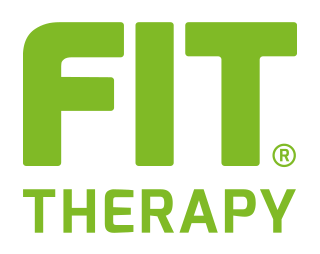- Home
- Epicondylitis
Epicondylitis

Epicondylitis
di FIT Therapy Technology Academy
What is epicondylitis?
Epicondylitis is a medical condition characterised by inflammation of the tendons that attach to the lateral epicondyle of the humerus, the bone of the upper arm. Lateral epicondylitis is more common in individuals who perform activities that require repeated arm and wrist movements, such as painting, gardening, manual labour and other sports.
Causes of epicondylitis
Epicondylitis is a medical condition characterised by pain and inflammation in the epicondyle, which is a bony prominence located near the elbow joint. There are two main types of epicondylitis, each associated with a specific area of the epicondyle:
- Lateral epicondylitis: This is the most common type of epicondylitis and is often called ‘tennis elbow’. It affects the lateral epicondyle, which is the bony prominence on the outer side of the elbow. This condition is associated with pain and inflammation of the tendons that connect the forearm muscles to the lateral epicondyle. Activities involving grip and repetitive wrist and arm movements, such as tennis, may increase the risk of developing this form of epicondylitis.
- Medial epicondylitis: This type of epicondylitis is less common and is known as ‘golfer’s elbow’. It affects the medial epicondyle, which is the bony prominence on the inner side of the elbow. Again, the pain is caused by inflammation of the tendons that connect the forearm muscles to the medial epicondyle. Activities involving repetitive wrist movements, such as golf, can be a trigger.
Symptoms
Typical symptoms of epicondylitis include pain in the elbow, which may radiate down the forearm, weakness in grip, and difficulty performing activities involving the forearm muscles. The pain is often worse when using the arm and can become chronic if not treated properly.
FIT Therapy Technology and treatment protocols.
The treatment of epicondylitis, which can be either lateral (tennis elbow) or medial (golfer’s elbow), is usually based on conservative approaches. The treatment aims to reduce pain, relieve inflammation and promote healing of the tendons involved. Here are some of the main treatment options for epicondylitis:
- Rest: Reduce or avoid activities that trigger pain, especially those involving repetitive wrist and arm movements. Rest is essential for healing.
- Application of ice: Applying ice to the affected area can help reduce inflammation and pain. It is advisable to apply ice for 15-20 minutes, several times a day.
- Physical therapy: A physiotherapist can develop a specific exercise programme to strengthen the forearm muscles, improve flexibility and reduce pain. Therapy may also include postural and movement re-education techniques.
- Physical therapies: Some physical therapies, such as massage, shock wave therapy or ultrasound therapy, can be used to promote healing and relieve pain.
- Elbow braces or supports: The use of elbow braces or supports can reduce tension on the tendons and provide support during activity.
It is important to consult a medical professional for an accurate evaluation and a specific treatment plan. The treatment of epicondylitis can take time, so patience is essential during the recovery process. Relapse prevention may involve controlling overuse or intense activity, maintaining good posture and strengthening the forearm muscles.
Treatment method with FIT Therapy Elbow Patch
The FIT Therapy Elbow Patch can be used to treat painful events related to epicondylitis.
It proves to be a valid natural alternative to the use of medication or devices that release heat.
Instructions for proper application (also watch the video tutorial):
- Remove the patch from the base.
- Apply the patch on the elbow, on dry, clean and hairless skin
- Wait about two minutes for better adhesion of the patch to the skin.
- Keep the patch applied for 5 days.
- Continue the therapy until an improvement in symptoms is observed.
The patch retains its function even when wet (e.g., during a shower).










